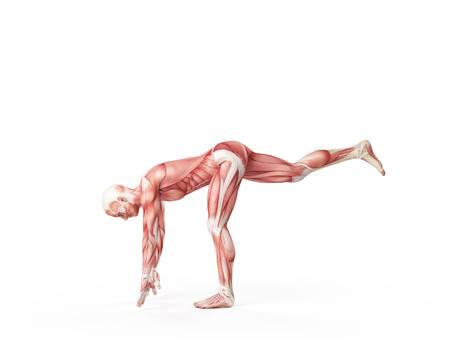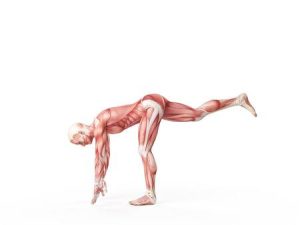
Surely as a competent personal trainer you encourage clients to get outside their comfort zone, understanding that each client requires a tailored training program. Yet, it’s easy to get into a fitness programming groove. Especially because exercises like lunges and squats are staples in most fitness routines. Aside from boredom that can set in, some folks simply can’t perform certain exercises because of physical limitations. A lunge is one exercise that can often produce knee or hip pain. Let’s explore some lunge exercise alternatives for your fitness clients.
Leave fitness favoritism at the door
We all have our favorite exercises. These are the ones we have mastered for ourselves and the ones we suggest when writing client programs. While this may feel like a safe, tried-and-true approach, there will certainly come a time when one of those exercises is contraindicated, due to a client’s injury/surgery/recovery/disability. Even a client with no mechanical issues may have hit a plateau and desire a new way to “shock” his muscles. A willingness to think outside of the box, to open your mind in terms of new and different approaches, will always be appreciated by clients.
There is little room for debate when it comes to performing lunges in a leg workout. When properly executed, lunges are highly effective at developing and empowering several of the lower body muscles: quadriceps, calves, hamstrings and glutes, while also offering a rise in heart rate. In working one leg at a time, the properly executed lunge requires balance, agility and in some cases significantly more leg strength than other leg exercises.
That is not to say that we recommend a “Go lunge or go home!” approach to our client! As the professional, the client looks to us to design the safest and most effective workout regardless of what he may be experiencing.
Expanding Your Exercise Horizons

Many lower body exercises can be substituted for lunges. Provided there are no hip-related concerns, squats are a fundamental exercise that will target the same muscles as the lunge, but are often a preferable choice since squats require significantly less strength and balance.
Many clients who are new to squats may need reminding of proper body positioning: chest and head are held upright, and the focus is directly ahead. Although many professional bodybuilders perform squats to the point of their thighs descending past parallel to the ground, the safest way to approach this exercise is to recommend stopping the lowering phase when the quads are parallel to the floor, with the knees behind the toes.
Reverse the lunge by stepping up
To reinforce the idea of stepping on the entire foot when ascending a staircase, driving the heel into the floor with each step to activate the glutes, it is easy to arrange a step with as many risers on each side as you deem safe for the client. Performing the up-up-down-down motion calls much of the lower body musculature into play. A knee-lift can be added as stability increases.
Now, get down
While many trainers feel as if they must always use machines or free weights with clients, there are a variety of excellent leg exercises that can be performed on the floor, utilizing only the client’s body weight. Starting with a gold-standard favorite, the basic glute bridge, clients typically progress fairly quickly to a glute bridge/hamstring curl combination, placing heels on a large stability ball. When performed in this manner, the core and glutes as well as the hamstrings are required to work.
If isolation exercises are more to your liking, the clamshell may be an ideal choice. Training in this manner recruits the outer thigh, which is often neglected when the quadriceps take over. Legs are stacked, knees are bent, feet are glued together; torso remains upright with support coming from the forearm. With each opening of the “clamshell”, glutes get contracted, so this exercise becomes increasingly effective when performed slowly.
Getting hip with a new approach
Keeping in mind that core stability and hip movement are key in cultivating lower body strength, a deadlift is a powerful alternative to lunges, while focusing more on the back of the leg. As an added bonus, deadlifts also strengthen the muscles in the lower back.
The biggest roadblock to performing lunges that I have run across with clients is a knee-related issue. In this case, lateral band walks fit the bill perfectly. With the resistance band secured at about the middle of the shins and tension being applied during each side step, a client can safely yet effectively engage the glutes, quads and hip.
By moving away from a one-size-fits-all mentality regarding lower body workouts, we can successfully customize a program that is creative, effective and safe. The client will be grateful, especially when injuries begin to heal and new strength gains are made!
Learn more in our Functional Training Specialist as a part of our Continuing Education Course Series.

References
http://www.livestrong.com/article/419136-alternative-exercises-to-the-lunge/
http://www.livestrong.com/article/439335-what-muscles-do-lunges-work-out/
http://www.huffingtonpost.com/2015/01/05/leg-exercises_n_6333914.html
http://woman.thenest.com/alternative-exercises-lunge-9652.html
https://www.popsugar.com/fitness/Leg-Exercises-Lunges-38532836
http://healthyliving.azcentral.com/alternatives-dumbbell-lunges-1158.html
http://www.shape.com/fitness/workouts/10-knee-friendly-lower-body-toners
https://www.acefitness.org/acefit/healthy-living-article/60/3605/myths-and-misconceptions-squats-and-lunges/
https://www.ncbi.nlm.nih.gov/pmc/articles/PMC3396296/






